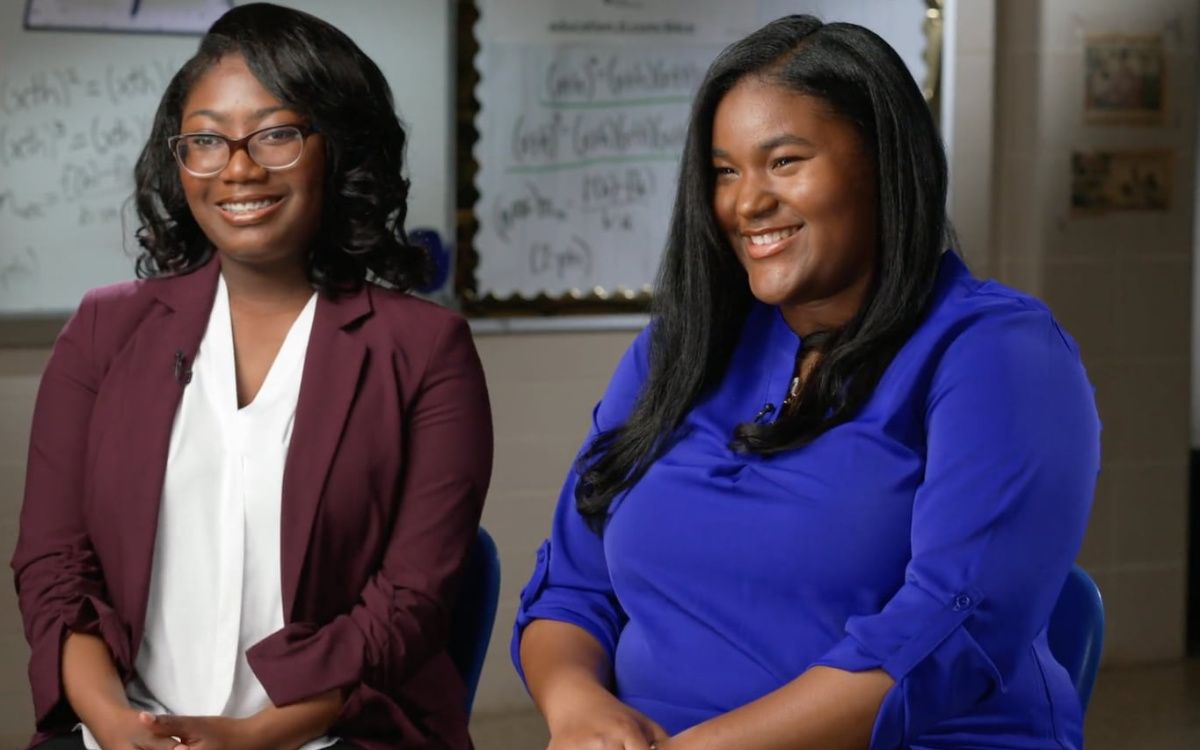Dr. Patricia Bath contributed to the field of ophthalmology, by inventing a device known as "The Laserphaco Probe" White Paper
Dr. Bath's invention is acknowledged to be one of the most important discoveries in the field of ophthalmology and laid the foundation for femtosecond laser cataract surgery.
Dr. Bath's invention is acknowledged to be one of the most important discoveries in the field of ophthalmology and laid the foundation for femtosecond laser cataract surgery.
Writing notes and Links
Add the image of her receiving the Color Of STEM Award
Dr. Patricia Bath contributed to the field of ophthalmology, by inventing a device known as "The Laserphaco Probe"
Dr. Bath's work extended outside the walls of the hospital, research lab, and traditional classroom. She worked in "the trenches" with communities both in the United States and internationally to screen early for eye diseases, thus ensuring any needed intervention and educating others about the importance of healthy eyes.
Patricia Bath was born in Harlem on November 4, 1942, to Rupert and Gladys (nee Elliott) Bath. She attended Charles Evans Hughes High School in Manhattan, graduating in 1960. In 1959, while in high school, Patricia participated in a summer science training program at Harlem Hospital, sponsored by Yeshiva University. Her joint research project with Arnold Lentnek focused on cancer and on how to better provide nourishment to patients suffering from the disease. According to the September 24, 1960,New Pittsburgh Courier, "their study links cancer with a deficiency in nutrition, suggesting a previously unexplored avenue in the quest for new types of chemicals with which to attack cancer." The research was later presented at the International Congress on Nutrition in Washington, DC.
This early scientific training ignited a lifelong passion of inquiry, learning, and problem solving, all characteristics of an inventor. Patricia graduated from Hunter College in Manhattan in 1964 and from Howard University Medical School in 1968. She completed an internship at Harlem Hospital (1968-1969), and a fellowship at Columbia University (1969-1970), and training at New York University (1970-1973). Dr. Bath joined the faculty of UCLA and Charles R. Drew University as an assistant professor of surgery (Drew) and ophthalmology (UCLA) in 1974. Patricia Bath strongly identified as an inventor. In one of her last public appearances, on April 3, 2019, Dr. Bath testified before the U.S. Senate Judiciary Committee on Trailblazers and Lost Einsteins: Women Inventors and the Future of American Innovation, stating:
"Of the many titles associated with my name and work, I choose to speak to you from the viewpoint, lens, and focus of a woman inventor. It is my hope that by sharing my views, experiences, and recommendations that other women inventors will keep the faith, not give up, and pursue their intellectual property goals with renewed vigor."
She continued her testimony by emphasizing the ongoing need or STEM/STEAM education. "The pipeline for increasing women scientists and engineers begins by igniting the spark for learning and curiosity," she said. "We need to support STEM/STEAM throughout the educational infrastructure of the USA." In 2014, the United States Patent and Trademark office news release stated that Bath, "helped restore or improve vision to millions of patients worldwide." This an extraordinary achievement that was made possible because of Dr. Bath's persistence, intellect, and work ethic. Her list of "firsts" is both lengthy and impressive: she was the first African American woman doctor to receive a medical patent, train in ophthalmology at Columbia University's medical school, join the surgical staff of UCLA Medical Center, chair the ophthalmology residency training program at the Charles R. Drew University of Medicine and Science, and the first woman appointed to the ophthalmology faculty at the UCLA Jules Stein Eye Institute. She was an outspoken champion of underserved populations affected by inadequate access to healthcare, cofounding the nonprofit American Institute for the Prevention of Blindness in 1976, advocating a community approach to eye care services, education, and research. Throughout her career, Dr. Bath reinforced her mission: primary eye care must be made available to all people, everywhere, regardless of their economic status.
Working with cataract patients in the 1980s, Dr. Bath began to research ways to make cataract surgery more accurate and less invasive. She envisioned using a laser to remove the clouded lens, making a much smaller incision than was then typical. In 1988, the US Patent and Trademark Office issued US Patent 4,744,360 to Dr. Bath for an "apparatus for ablation and removing cataract lenses." She would name the device the Laserphaco Probe. Dr. Bath was awarded a total of five patents:
Apparatus for ablating and removing cataract lenses (US 4,744,360)
Method and apparatus for ablating and removing cataract lenses (US 5,843,071)
Laser apparatus for surgery of cataractous lenses (US 5,919,186)
Pulsed ultrasound method for fragmenting/emulsifying and removing cataractous lenses (US 6,083,192)
Combination ultrasound and laser method and apparatus for removing cataract lenses (US 6,544,254).
Dr. Bath held eight patents — five in the United States and three internationally — for inventing the method and removal of cataract lenses using laser ablation and her Laserphaco probe. It is difficult to grasp just how big an impact Dr. Bath had on the field of cataract surgery. Known as a "laser pioneer" by Photonics, she is recognized worldwide as a trailblazer in the treatment of cataracts using her Laserphaco invention, which is defined in the textbook "Eradicating Blindness" as well as countless online articles. Dr. Bath is the mother of laser cataract surgery, as she was the first to apply and demonstrate efficacy of laser techniques to the standard phacoemulsification.
Her discovery determined the appropriate wavelength, temperature and incision size, which she combined with irrigation and aspiration within her Laserphaco probe. Dr. Bath's invention is acknowledged to be one of the most important discoveries in the field of ophthalmology and laid the foundation for femtosecond laser cataract surgery. These advances have revolutionized the treatment of cataracts, one of the leading causes of blindness and visual impairment, and have helped to restore sight to patients all over the world. Dr. Bath has over 50 publications and received numerous honors, awards and recognition from professional associations.
Selected Honors and Awards:
1995: NAACP Legal Defense Fund Black Woman Achievement Award
1999: National Museum of American History, Innovative Lives Program
2001: American Medical Women's Association Hall of Fame Induction
2006: The Tubman Museum's Sheila Award
2011: American Academy of Ophthalmology Induction into the Museum of Vision for Contributions to Ophthalmology
2012: Tribeca Film Festival Disruptive Innovation Award
2013: Association of Black Women Physicians Lifetime Achievement Award for Ophthalmology Contributions
2014: Alpha Kappa Alpha Presidential Award for Health and Medical Services
2014: Howard University Charter Day Award for Distinguished Achievement in Ophthalmology and Medicine
2017: Medscape 1 of 12 Women Physicians Who Changed the Course of American Medicine
2017:
Time Magazine
Firsts: Women Who Are Changing the World for being the first to invent and demonstrate laserphaco cataract surgery
2017: Hunter College Hall of Fame Induction
2018: New York Academy of Medicine John Stearns Medal for Distinguished Contributions in Clinical Practice for invention of laserphaco cataract surgery
2018: Alliance for Aging Research: Silver Innovator Award for contributions and research toward blindness prevention
Dr. Bath was a Fellow of the American College of Surgeons from 1976 to 1989, a fellow of the American Academy of Ophthalmology, as well as a member of the American Society of Cataract and Refractive Surgery and the Association for Research in Vision and Ophthalmology. Dr. Bath has been honored by two of her universities. Hunter College placed her in its "Hall of Fame" in 1988 and Howard University declared her a "Howard University Pioneer in Academic Medicine" in 1993. A picture book on her life and work in science was published in 2017 and was cited by both the National Science Teachers Association and the Chicago Public Library's list of best children's books of the year.
Laser Phaco Papers
https://sova.si.edu/record/nmah.ac.1585/ref410
Dr. Patricia Bath at the Color Of STEM
Patricia Bath Papers, Archives Center, National Museum of American History
https://sova.si.edu/record/nmah.ac.1585



